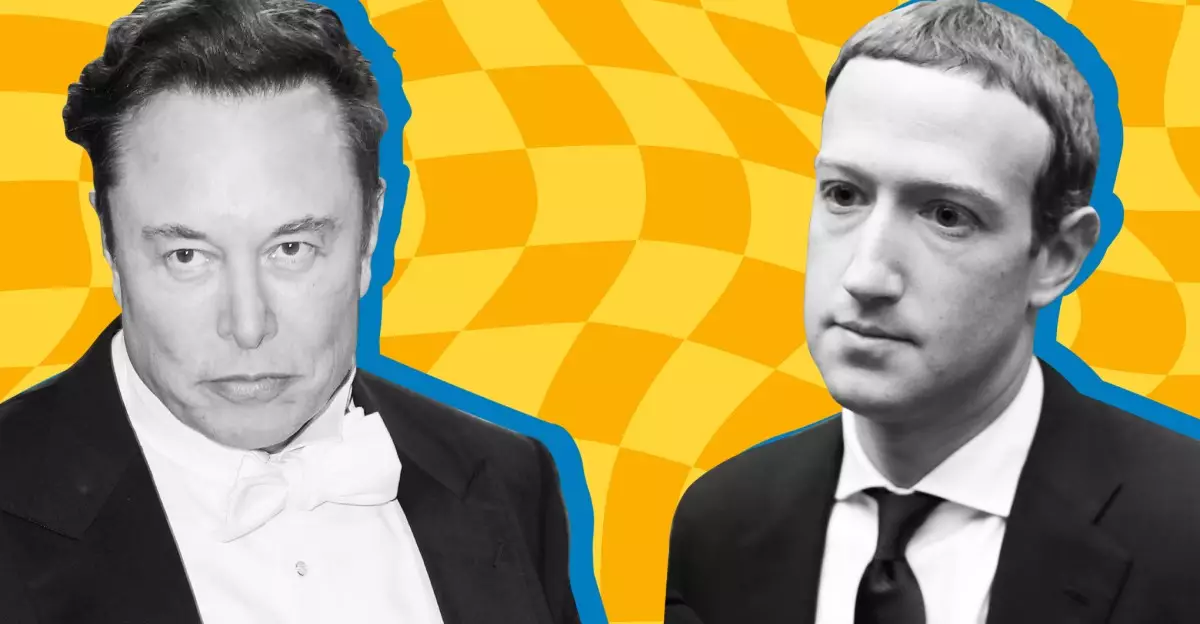Over the past weekend, a peculiar phenomenon unraveled in several cities across California, as the AI-generated voices of technology giants Elon Musk and Mark Zuckerberg reportedly hijacked crosswalk signal buttons. This bizarre prank has ignited conversations not just about the shenanigans of a few pranksters, but also about the broader implications of how technology – specifically artificial intelligence – can be manipulated for humorous, yet satirical purposes. The voice of Musk cheerfully coaxed pedestrians to embrace friendship, while a synthesized Zuckerberg shamelessly bragged about dubious achievements in “undermining democracy.”
Though this incident can be dismissed as mere tomfoolery, it opens the floodgates to questions surrounding the ethical boundaries of technological mischief and accountability. What does it mean for our public infrastructure when iconic figures can be instantaneously cloned, their likenesses leveraged to serve both comedic and satirical ends?
Reacting to the Hack: City Officials Respond
In response to this unexpected audio takeover, local government officials swiftly moved to disable the crosswalk voice features, deeming them unusable until further repairs could be made. A spokesperson from Palo Alto confirmed that a total of twelve intersections had been affected by the alleged hacking. Moreover, the rapidity of response demonstrates that municipal leaders are keenly aware of their responsibility to ensure public safety. But it raises another question: what protocols are in place to prevent such distortions of public utility systems?
As local authorities scramble to address this unique technological hiccup, the spectacle serves more than just a moment of amusement; it offers a rare glimpse into the current state of municipal cybersecurity. It’s not merely an inconvenience but a potential wake-up call regarding vulnerabilities in systems meant to assist the visually impaired.
The Fine Line Between Humor and Public Safety
While the audacious hijacking of crosswalk signals might incite laughter and shareable moments on social media, it also treads perilously close to a line we all must consider. Safety notices are a vital part of pedestrian navigation, especially for those who are visually impaired. The risk lies in the fact that rather than replacing them, these AI voices were layered over existing messages—a doubling of input that could confuse or mislead.
Humor is subjective; while some may find the synthesized impersonations charming, others might see the potential for distraction or misinformation. What happens when individuals rely on these automated voices for instructions, only to be met with quips from character impersonators? The stakes rise significantly when the lines between fun and function blur, raising alarms that may not be readily appreciated in a world preoccupied with internet fads and viral trends.
Satire or Slander? The Public’s Take
The responses to this incident vary widely, from amusement to grave concern over technological ethics. On the one hand, utilizing the personas of notable figures such as Musk and Zuckerberg provides a playful commentary on their significant roles in shaping technology’s impact on society. Musk’s voice teasingly quips about loneliness and the absurdity of wealth, while Zuckerberg’s lines mockingly underscore the moral complexities of technology use.
Yet, does that humor come at too high a cost? The inspirations behind these imitative soundbites prompt questions about the intention of such actions. Is it mere satire, or does it border on disrespectful? As these tech executives grapple with the implications of their creations, public perception of them can shift dramatically depending on how their voices are presented in these unconventional settings.
The Broader Implications of AI in Our Everyday Lives
This incident encapsulates the dual-edged sword that is AI technology. Capable of enhancing lives through innovation, AI also poses existential questions and ethical dilemmas that society is still struggling to navigate. If voices can be cloned and repurposed so easily, consumers may need to confront deeper considerations about authenticity, trust, and the perception of authority. Who controls these voices, and whom do they represent?
Moving forward, this event should serve as a crucial juncture for conversations surrounding regulations that govern both AI applications and public safety measures. While humor has its place in tech, we must ensure that such pranks do not detract from the serious discussions surrounding the technologies that increasingly infiltrate daily life. We may find ourselves at a pivotal moment where the laughter echoes alongside the urgent need for responsible innovation and community safeguards.
In the end, the uproarious rendition of Musk and Zuckerberg’s hijacked voices serves as more than just a humorous distraction; it invites us to consider the implications of technology in public spaces and ultimately, the ethical responsibilities of both creators and consumers.


Leave a Reply